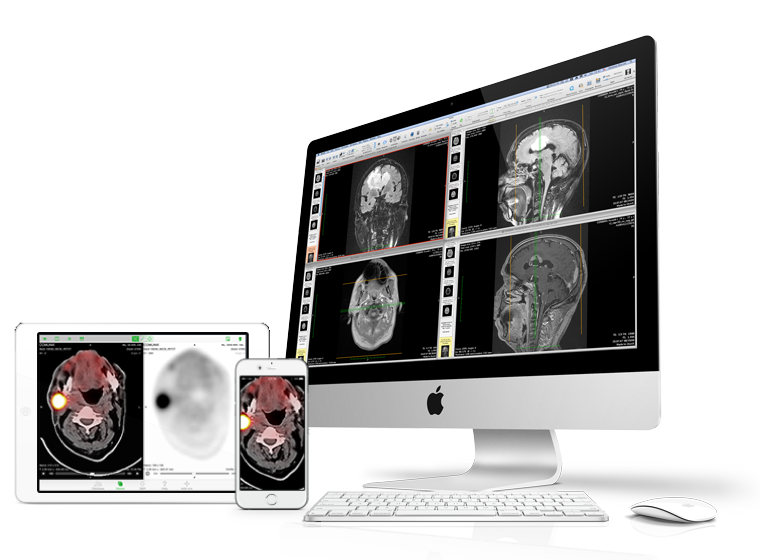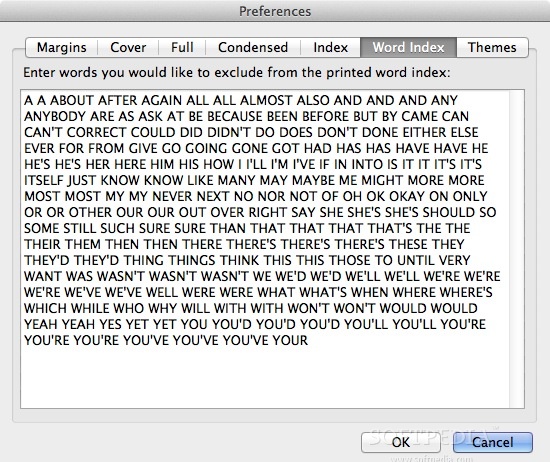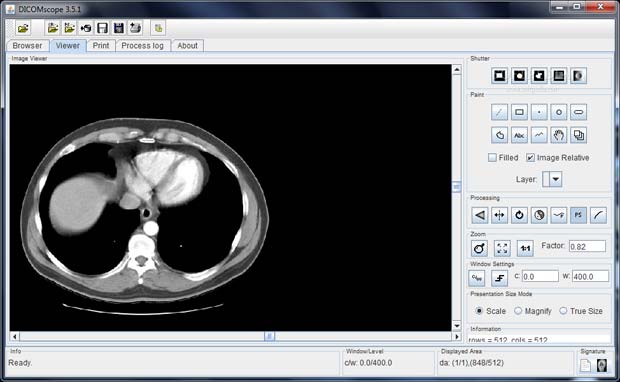- Codonics Clarity Viewer Windows 10
- Codonics Clarity Viewer For Mac Os
- Powerpoint Viewer For Mac
- Codonics Clarity Viewer For Mac Windows 10
- Codonics Clarity Viewer For Macbook
- Codonics Clarity Viewer For Mac Download
Codonics Clarity Viewer. Clarity™ features simple image navigation and selection, an intuitive user interface, quick viewer launch and rapid image loading. Click image to enlarge. Set layout of studies to be displayed on the screen; Fit image to window or view in true size. How to create a 3D Terrain with Google Maps and height maps in Photoshop - 3D Map Generator Terrain - Duration: 20:32. Orange Box Ceo Recommended for you.
If you work with PTX transcript files, you already know that it can be frustrating doing so on a Mac. One of my readers, Nathan Chaney, a patent attorney in Arkadelphia, AR, developed a solution for working with PTX files on a Mac, and he has graciously agreed to share it with my readers. His guest post includes an installation guide for installing the PTX viewer on Wine and then installing a PDF printer that will work to convert the PTX files to PDF. Thanks so much to Nathan for his work in developing this solution and for sharing it with my readers.
Many colleagues know I have an IT background, so I field lots of Mac-In-Law-Office questions. I recently fielded a question about PTX transcript files, and I learned that Clarity Legal's online .ptx conversion tool, which has been featured on Ben's blog before, has been shuttered.
I use the emulation program Wine to run the Windows PTX viewer from the Mac. This is a how-to guide for installing the programs necessary to (1) run the E-Transcript Viewer, and (2) save the transcripts as PDF files. It's a little bit involved, and requires some use of the command line.
First, install XCode from the App Store. Next, we'll need to install some command line tools. If you are running OS X 10.9 (Mavericks), open a Terminal windows (/Applications/Terminal) and run the following command:
Xcom 2 rng mod. xcode-select –install
Run the following command to agree to the XCode license (you'll need to be an administrator of the computer and enter your password for the sudo command several times throughout this process):
sudo xcodebuild -license
If you're running an earlier version of OS X, open the XCode application, find the 'Downloads' pane, and download and install the Command Line Tools from that pane.
Next, you'll need the Macports package installation manager, available here. Choose the version that corresponds to your operating system, and install the package. When it's finished, run the following command to update Macports to the latest release:
sudo port -v selfupdate
We're going to use MacPorts to install a package called CUPS-PDF. This is very similar to the 'Save as PDF' feature already on your Mac. Open up the Terminal application and run this command to install CUPS-PDF:
sudo port install cups-pdf
The output of this command will give you some instructions to run upon initial setup. They are:
ln -s /opt/local/var/spool/cups-pdf/$USER ~/Desktop/cups-pdf
/opt/local/libexec/cups-pdf_links.sh
sudo killall -1 cupsd
The first command creates a shortcut to the CUPS-PDF output folder on your Desktop. You canmove this shortcut into whichever folder you prefer. The second command will require you to be an administrator and type in your password (it uses the sudo command).
The next thing to do is install the CUPS-PDF printer on your Mac. Go to System Preferences > Printers & Scanners, and click the ‘+' below the printer list (see image at right). CUPS-PDF should appear in the ‘Default' list.
Simply highlight CUPS-PDF, click ‘Add', and you should have a CUPS-PDF printer in your printer list. (This will work for printing other things to PDF too — for instance, if you want to change options in the print dialog, but Save to PDF won't let you, the CUPS-PDF printer is a good solution).
Next, we'll use Macports to install Wine, along with a couple of packages needed to compile Wine:
sudo port install apple-gcc42 git-core wine-devel
Codonics Clarity Viewer Windows 10
This will likely take a while. Take an opportunity to quench the thirst all this talk about wine and port created. The next step is to install the transcript viewer, available here. Download the file, then type the following commands into your Terminal:
Codonics Clarity Viewer For Mac Os
cd ~/Downloads
wine E-Transcript_Bundle_Viewer-6.1.1.exe
Of course, use the version number of the file you downloaded on the last command. This will open an E-Transcript Viewer installation window. Wine may need to install a few packages to make this all work; just follow the prompts to install them if so. Use the default values for installation of the E-Transcript Viewer, and complete the installation.
Finally, we'll need to create a shortcut to the installed E-Transcript Viewer application, which is hidden. Open the TextEdit application, and click New Document. Copy and paste the following lines into the document:
#!/bin/sh
wine '/Users/nathan/.wine/drive_c/Program Files/RealLegal/E-Bundle Viewer/EBundleViewer.exe'
Click Format > Make Plain Text. Save the file in the Applications Folder as 'E-Transcript Viewer.command'. Finally, go back to the Terminal window and enter the following commands so that the script we just created can be executed:
cd /Applications
chmod +x E-Transcript Viewer.command
Now, you should be able to double-click the ‘E-Transcript Viewer.command' file in the Applications folder any time you need to open a .ptx file. Here's the result:

You should be able to select CUPS-PDF in the print dialog of the E-Tran viewer, like so:
After a few seconds, a brand-new PDF containing your transcript will appear in the folder that's linked to your Desktop.
If you work with PTX transcript files, you already know that it can be frustrating doing so on a Mac. One of my readers, Nathan Chaney, a patent attorney in Arkadelphia, AR, developed a solution for working with PTX files on a Mac, and he has graciously agreed to share it with my readers. His guest post includes an installation guide for installing the PTX viewer on Wine and then installing a PDF printer that will work to convert the PTX files to PDF. Thanks so much to Nathan for his work in developing this solution and for sharing it with my readers.
Many colleagues know I have an IT background, so I field lots of Mac-In-Law-Office questions. I recently fielded a question about PTX transcript files, and I learned that Clarity Legal's online .ptx conversion tool, which has been featured on Ben's blog before, has been shuttered.

I use the emulation program Wine to run the Windows PTX viewer from the Mac. This is a how-to guide for installing the programs necessary to (1) run the E-Transcript Viewer, and (2) save the transcripts as PDF files. It's a little bit involved, and requires some use of the command line.
First, install XCode from the App Store. Next, we'll need to install some command line tools. If you are running OS X 10.9 (Mavericks), open a Terminal windows (/Applications/Terminal) and run the following command:
xcode-select –install
Run the following command to agree to the XCode license (you'll need to be an administrator of the computer and enter your password for the sudo command several times throughout this process):
sudo xcodebuild -license
If you're running an earlier version of OS X, open the XCode application, find the 'Downloads' pane, and download and install the Command Line Tools from that pane.
Next, you'll need the Macports package installation manager, available here. Choose the version that corresponds to your operating system, and install the package. When it's finished, run the following command to update Macports to the latest release:
sudo port -v selfupdate
We're going to use MacPorts to install a package called CUPS-PDF. This is very similar to the 'Save as PDF' feature already on your Mac. Open up the Terminal application and run this command to install CUPS-PDF:
sudo port install cups-pdf
The output of this command will give you some instructions to run upon initial setup. They are:
ln -s /opt/local/var/spool/cups-pdf/$USER ~/Desktop/cups-pdf
/opt/local/libexec/cups-pdf_links.sh
sudo killall -1 cupsd
The first command creates a shortcut to the CUPS-PDF output folder on your Desktop. You canmove this shortcut into whichever folder you prefer. The second command will require you to be an administrator and type in your password (it uses the sudo command).
The next thing to do is install the CUPS-PDF printer on your Mac. Go to System Preferences > Printers & Scanners, and click the ‘+' below the printer list (see image at right). CUPS-PDF should appear in the ‘Default' list.
Simply highlight CUPS-PDF, click ‘Add', and you should have a CUPS-PDF printer in your printer list. (This will work for printing other things to PDF too — for instance, if you want to change options in the print dialog, but Save to PDF won't let you, the CUPS-PDF printer is a good solution).
Next, we'll use Macports to install Wine, along with a couple of packages needed to compile Wine:
sudo port install apple-gcc42 git-core wine-devel
This will likely take a while. Take an opportunity to quench the thirst all this talk about wine and port created. The next step is to install the transcript viewer, available here. Download the file, then type the following commands into your Terminal:
However, if you download a.Cab file and want to install it manually, you must expand it before you can do so.Locate the CAB file on your hard drive and note its file path location (i.e.
cd ~/Downloads
wine E-Transcript_Bundle_Viewer-6.1.1.exe
Of course, use the version number of the file you downloaded on the last command. This will open an E-Transcript Viewer installation window. Wine may need to install a few packages to make this all work; just follow the prompts to install them if so. Use the default values for installation of the E-Transcript Viewer, and complete the installation.
Powerpoint Viewer For Mac
Finally, we'll need to create a shortcut to the installed E-Transcript Viewer application, which is hidden. Open the TextEdit application, and click New Document. Copy and paste the following lines into the document:
#!/bin/sh
wine '/Users/nathan/.wine/drive_c/Program Files/RealLegal/E-Bundle Viewer/EBundleViewer.exe'
Click Format > Make Plain Text. Save the file in the Applications Folder as 'E-Transcript Viewer.command'. Finally, go back to the Terminal window and enter the following commands so that the script we just created can be executed:
cd /Applications
chmod +x E-Transcript Viewer.command
Now, you should be able to double-click the ‘E-Transcript Viewer.command' file in the Applications folder any time you need to open a .ptx file. Here's the result:
Codonics Clarity Viewer For Mac Windows 10

You should be able to select CUPS-PDF in the print dialog of the E-Tran viewer, like so:
Codonics Clarity Viewer For Macbook


You should be able to select CUPS-PDF in the print dialog of the E-Tran viewer, like so:
After a few seconds, a brand-new PDF containing your transcript will appear in the folder that's linked to your Desktop.
If you work with PTX transcript files, you already know that it can be frustrating doing so on a Mac. One of my readers, Nathan Chaney, a patent attorney in Arkadelphia, AR, developed a solution for working with PTX files on a Mac, and he has graciously agreed to share it with my readers. His guest post includes an installation guide for installing the PTX viewer on Wine and then installing a PDF printer that will work to convert the PTX files to PDF. Thanks so much to Nathan for his work in developing this solution and for sharing it with my readers.
Many colleagues know I have an IT background, so I field lots of Mac-In-Law-Office questions. I recently fielded a question about PTX transcript files, and I learned that Clarity Legal's online .ptx conversion tool, which has been featured on Ben's blog before, has been shuttered.
I use the emulation program Wine to run the Windows PTX viewer from the Mac. This is a how-to guide for installing the programs necessary to (1) run the E-Transcript Viewer, and (2) save the transcripts as PDF files. It's a little bit involved, and requires some use of the command line.
First, install XCode from the App Store. Next, we'll need to install some command line tools. If you are running OS X 10.9 (Mavericks), open a Terminal windows (/Applications/Terminal) and run the following command:
xcode-select –install
Run the following command to agree to the XCode license (you'll need to be an administrator of the computer and enter your password for the sudo command several times throughout this process):
sudo xcodebuild -license
If you're running an earlier version of OS X, open the XCode application, find the 'Downloads' pane, and download and install the Command Line Tools from that pane.
Next, you'll need the Macports package installation manager, available here. Choose the version that corresponds to your operating system, and install the package. When it's finished, run the following command to update Macports to the latest release:
sudo port -v selfupdate
We're going to use MacPorts to install a package called CUPS-PDF. This is very similar to the 'Save as PDF' feature already on your Mac. Open up the Terminal application and run this command to install CUPS-PDF:
sudo port install cups-pdf
The output of this command will give you some instructions to run upon initial setup. They are:
ln -s /opt/local/var/spool/cups-pdf/$USER ~/Desktop/cups-pdf
/opt/local/libexec/cups-pdf_links.sh
sudo killall -1 cupsd
The first command creates a shortcut to the CUPS-PDF output folder on your Desktop. You canmove this shortcut into whichever folder you prefer. The second command will require you to be an administrator and type in your password (it uses the sudo command).
The next thing to do is install the CUPS-PDF printer on your Mac. Go to System Preferences > Printers & Scanners, and click the ‘+' below the printer list (see image at right). CUPS-PDF should appear in the ‘Default' list.
Simply highlight CUPS-PDF, click ‘Add', and you should have a CUPS-PDF printer in your printer list. (This will work for printing other things to PDF too — for instance, if you want to change options in the print dialog, but Save to PDF won't let you, the CUPS-PDF printer is a good solution).
Next, we'll use Macports to install Wine, along with a couple of packages needed to compile Wine:
sudo port install apple-gcc42 git-core wine-devel
This will likely take a while. Take an opportunity to quench the thirst all this talk about wine and port created. The next step is to install the transcript viewer, available here. Download the file, then type the following commands into your Terminal:
However, if you download a.Cab file and want to install it manually, you must expand it before you can do so.Locate the CAB file on your hard drive and note its file path location (i.e.
cd ~/Downloads
wine E-Transcript_Bundle_Viewer-6.1.1.exe
Of course, use the version number of the file you downloaded on the last command. This will open an E-Transcript Viewer installation window. Wine may need to install a few packages to make this all work; just follow the prompts to install them if so. Use the default values for installation of the E-Transcript Viewer, and complete the installation.
Powerpoint Viewer For Mac
Finally, we'll need to create a shortcut to the installed E-Transcript Viewer application, which is hidden. Open the TextEdit application, and click New Document. Copy and paste the following lines into the document:
#!/bin/sh
wine '/Users/nathan/.wine/drive_c/Program Files/RealLegal/E-Bundle Viewer/EBundleViewer.exe'
Click Format > Make Plain Text. Save the file in the Applications Folder as 'E-Transcript Viewer.command'. Finally, go back to the Terminal window and enter the following commands so that the script we just created can be executed:
cd /Applications
chmod +x E-Transcript Viewer.command
Now, you should be able to double-click the ‘E-Transcript Viewer.command' file in the Applications folder any time you need to open a .ptx file. Here's the result:
Codonics Clarity Viewer For Mac Windows 10
You should be able to select CUPS-PDF in the print dialog of the E-Tran viewer, like so:
Codonics Clarity Viewer For Macbook
Codonics Clarity Viewer For Mac Download
After a few seconds, a brand-new PDF containing your transcript will appear in the folder that's linked to your Desktop.
